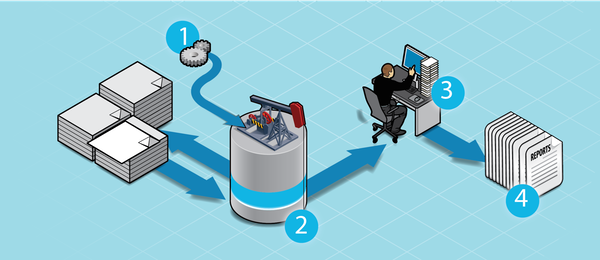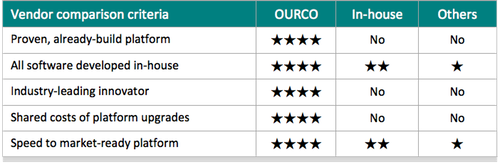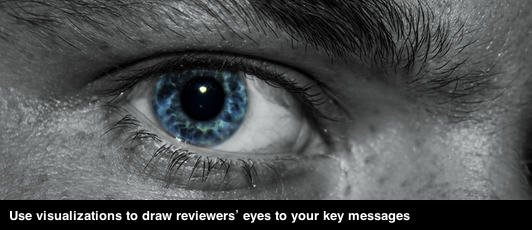Recent posts have covered using section storyboards to integrate visuals, creating rich visuals on small budgets, visualizing with flowcharts, and using meatball charts as visuals. This post describes ways to reuse visualizations in informal proposals.
Informal proposals—those submitted outside a formal bid process offer the potential of making sales without the time and expense of completing an RFP response. For more, see this series of posts on informal proposals. Informal proposals offer the added benefit of letting you determine the structure and content—including visualization. This is an opportunity to develop visuals that you can use over and over.
Use the examples below as thought starters to develop visualizations for your informal proposals.
Show process
Use a high-level illustration to showcase a repeatable process. Use the caption to stress the advantages of your process (time to market, reliability, risk reduction etc.). Have a freelancer create a simple graphic (example below) for $250 or so, and then use it many times. Plan your graphic so any project-specific content is in the caption, not in the graphic itself.

Structure your solution
Use structure to walk reviewers through your proposed solution. Keep the descriptions high-level. If your prospect requires a highly detailed solution description, consider putting it in an appendix, so you don’t lose the attention of senior-level proposal reviewers (such as the economic buyer).

Show the alternatives
Buyers naturally want to know they’re making the best choice among available options. Help your prospect with this due diligence by including a comparison table.

Show you satisfy all requirements
We recommend using a compliance matrix to show you fully comply with a formal RFP. For informal proposals, use a table to align key prospect issues with elements of your solution—as in the example below.

Include selling captions
Now that you’ve attracted the evaluator’s eye, put your strongest selling arguments in captions. See this post on how to write selling captions that do more than simply explain the visual.
Return on investment
It makes good sense to invest in strong informal proposals, considering the alternative—the cost and risk of a formal RFP response. And because informal proposal components—both copy and visualizations—can be customized and reused, you will recoup your time and out-of-pocket costs many times over.


